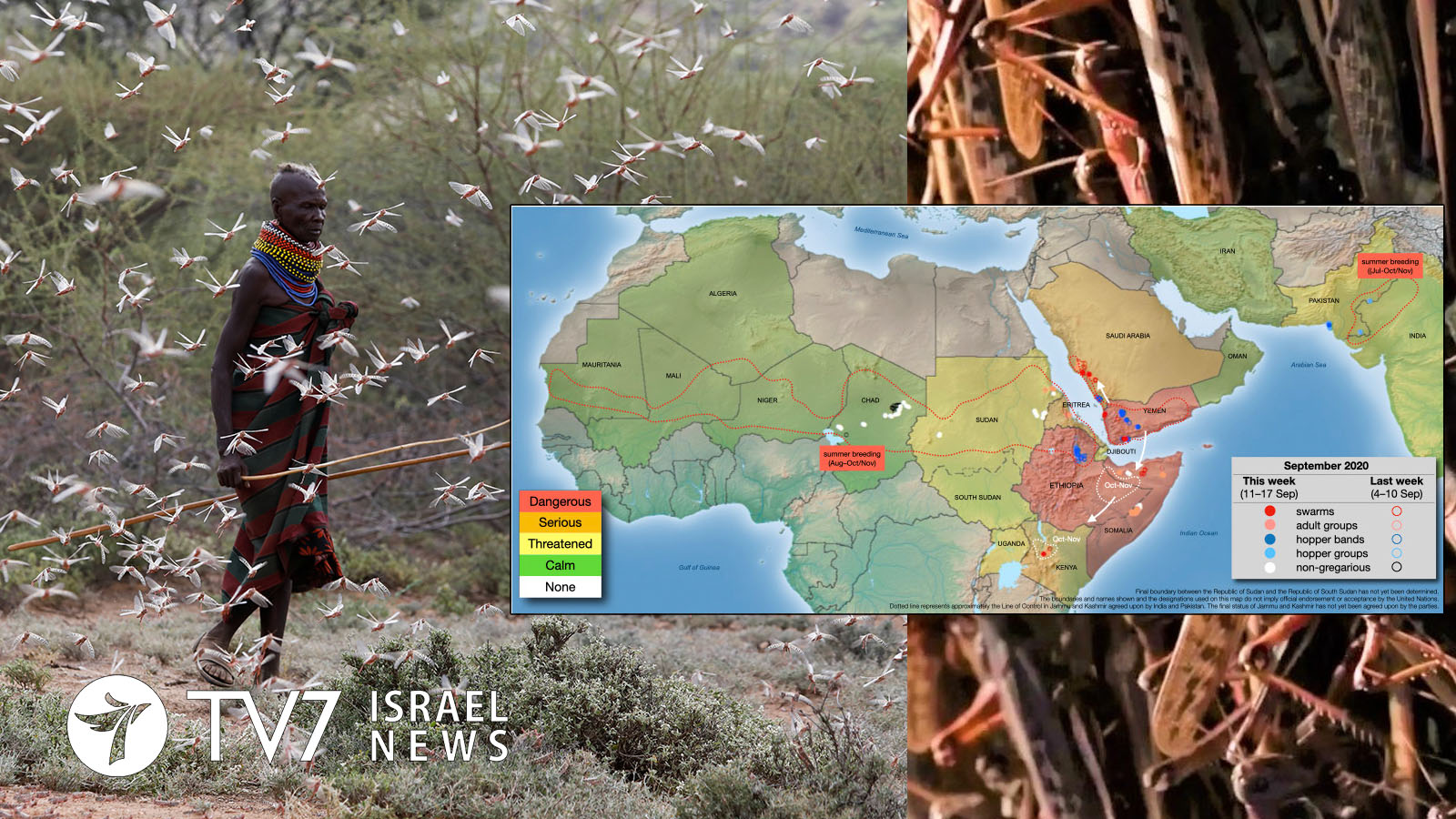Both sides of the Red Sea are being closely monitored for the Desert Locust. The United Nations Food and Agriculture Organization (FAO) is reporting that the situation is still developing, amid signs of deterioration as a result of swarm breeding.
According to the most recent update from the FAO’s Desert Locust Information Service (DLIS), the Desert Locust situation remains serious in Yemen and other areas of the Horn of Africa.
Hopper bands and swarms continue to be detected in Yemen’s interior, and are spreading to coastal areas on the Red Sea and in the south. Limited control operations have been undertaken in some sectors. Intensive monitoring and vigilance are mandated amid rising concern of early swarm breeding on Yemen’s Red Sea coastal plains; as well as those in Eritrea, Saudi Arabia.
Sudan also remains at risk due to conditions created by rainfall at the start of August and again this month.
Meanwhile, there has been notable success at containing the voracious insect in Southwest Asia, where the situation continues to improve. There are also what the FAO-DLIS has cautiously termed to be “initial signs of improvement in parts of East Africa.”
Thanks to ongoing aerial control operations in northwest Kenya, there are only a few remaining immature swarms. A small 3rd-generation of breeding is likely to begin next month, but proliferation may be limited by below-normal “Short Rains” that are predicted for this year’s “small” rainy season between late October and December.
There are still numerous hopper bands in northeast Ethiopia, predominantly in the Afar region where “substantial breeding” has taken place. New swarms are likely to form in the coming weeks despite ongoing aerial control measures.
Similar control operations involving the spraying of biopesticides by air are making better progress in Somalia, where immature swarms are present on the northern plateau in Somaliland and Puntland; although a rising number of adult groups have been reported in the central region of Galguduud.
The situation also continues to improve elsewhere in In Southwest Asia. There have been small infestations detected in Pakistan’s Lasbela Valley, west of Karachi. The FAO has recommended that regular and intensive surveys be maintained along the country’s border with India so that any sign of a small 2nd-generation of breeding can be detected.
Fortunately, summer breeding areas of the northern Sahel from Mauritania to western Eritrea remain calm. The FAO- DLIS forecast is for locust numbers “to remain low and no significant developments are likely,” despite heavy rainfall including floods in some of these areas.
— By Erin Viner
